Dutch tomato "Big Beef F1": what gardeners think of the Dutch hybrid and tips for growing
Tomatoes Big Beef f1 - a product of Dutch breeding work, which has received recognition in many countries. Ideal for growing in greenhouse conditions. The culture is characterized by early ripening, large fruits with fleshy and sugary flesh, disease resistance.
In this article we will talk about the nuances of growing tomato in greenhouses, the advantages and disadvantages of a hybrid.
The content of the article
Description and characteristics
Indeterminate hybrid Big Beef f1 developed by the Dutch company Monsanto for cultivation in greenhouses and hotbeds.
Plants are sprawling, vigorous, with many leaves.
In the photo - a bush of tomatoes Beef Big f1.
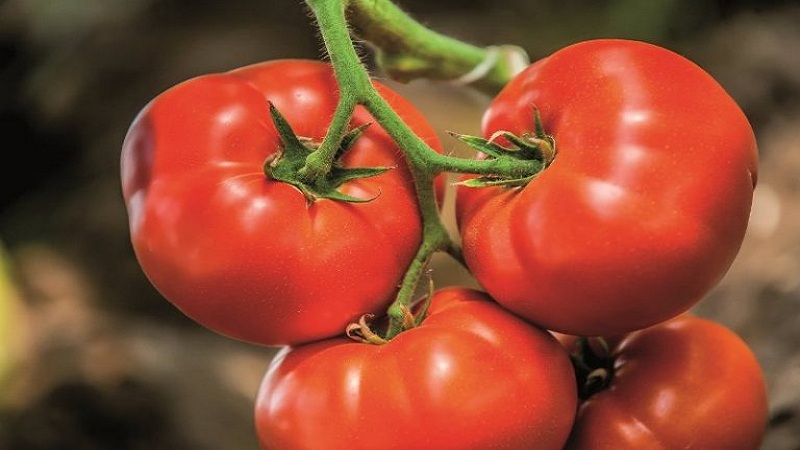
Distinctive characteristics table.
| Indicators | Characteristic |
| Weight | 200-250 g |
| The form | Flat-round, slightly ribbed. |
| Coloration | Red. |
| Leaves | Large, light green. |
| Inflorescence type | Plain. |
| Number of nests | More than six. |
| Number of cameras | Six or more. |
| Pulp | Fleshy, juicy. |
| Taste | Sweet, cuddly. |
| Skin | Smooth, dense. |
| Appointment | For fresh consumption, canning, making juice and pasta. |
| Bushes height | 1.8-2 m |
| Ripening period | 99-105 from the moment of emergence. |
| Yield | 9.4 kg / m² |
| Sustainability | To low temperatures, root knot nematode, fusarium, verticillosis, TMV. |
| Transportability | High. |
Pros and cons
Hybrid benefits:
- early maturation;
- the possibility of ripening in a cool room;
- excellent transportability;
- pleasant taste due to the large amount of sucrose;
- dense skin does not crack;
- long shelf life;
- resistance to nightshade diseases and low temperatures.
Among the disadvantages, the need for pinching is distinguished. to form a bush in one stem and a garter.
Growing seedlings
Sowing works begin in late February-early March 55-60 days before planting in the ground. Pre-prepare containers and soil.
Soil preparation and sowing
Hybrid seeds do not need to be processed with anything, the manufacturer has taken care of this.
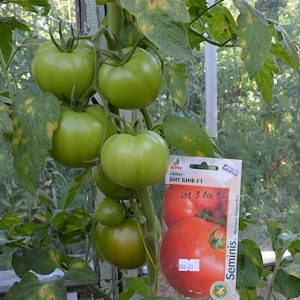 For sowing, a universal soil for seedlings or prepared with your own hand is suitable... To do this, take:
For sowing, a universal soil for seedlings or prepared with your own hand is suitable... To do this, take:
- 1 part peat;
- 1 part of humus;
- 1 piece of turf;
- 1 part river sand;
- 1 tbsp. l. wood ash;
- 1 tbsp. l. superphosphate.
It is advisable to disinfect the soil by warming up in the oven. or watering with a solution of potassium permanganate. Next, the substrate is moistened and filled with containers 5-7 cm high with drainage holes at the bottom to drain excess water.
In the ground, grooves are made with a depth of 1.5 cm and the seeds are laid out with an interval of 2 cm... The earth is poured on top with a layer of 1 cm, watered with a syringe and covered with polyethylene. The containers are placed in a dark place, the film is removed daily for 15-20 minutes for airing. Seedlings appear at a temperature of +22 ° С after five days, at 25 ° С after three days.
For sowing seeds, a method that does not involve a pick is often used.... To do this, take special dense bags from gardening stores or tall plastic glasses. Fill the containers with soil and spread two seeds each. Cover with foil and wait for seedlings.
Seedling care
When sowing seeds in common containers, sprouts dive into peat cups or other containers after 4-5 true leaves appear. Seedlings are taken out on a windowsill with sufficient lighting.
If the seed was immediately seeded in separate glasses, of the two sprouts that appear, the strongest is selected, and the weak is removed. The earth is filled up as the seedlings grow.
The optimum temperature for the growth of strong seedlings is +20 ° С during the day, and +15 ° С at night... If there is not enough light, phytolamps are installed. The longer the daylight hours, the better - the seedlings do not grow, they gain strength faster.
The soil is moistened moderately with a syringe or a syringe, pouring water under the root.
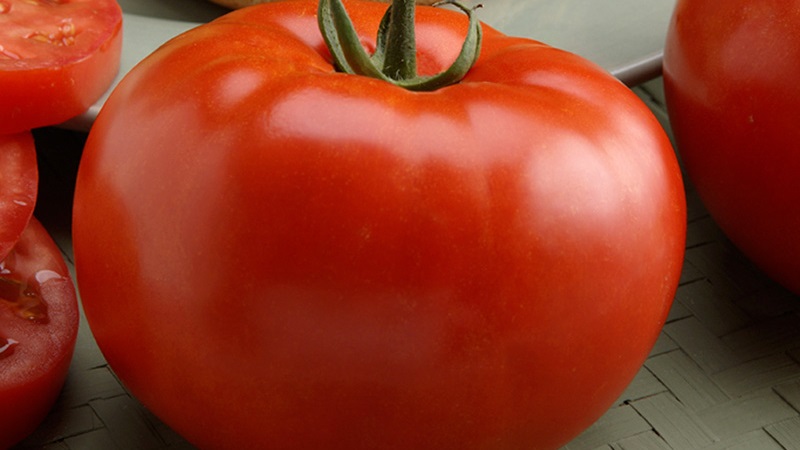
Before planting in the ground, tomatoes are hardened... Every day, the seedlings are taken out into fresh air and left for two hours. The time is gradually increased to 24 hours.
About other varieties of x large-fruited tomatoes:
Agrotechnics of tomatoes
The Big Beef hybrid grows best on loamy or sandy loam, breathable soil... Tomatoes need constant care: pinching, watering, fertilizing, preventing diseases and pests.
Landing in the ground
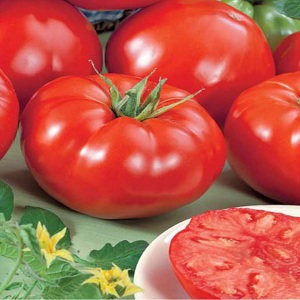 Before "relocating" tomato seedlings to a permanent placeare engaged in soil preparation in the greenhouse. The top layer is removed (5-10 cm), the remaining soil is disinfected with copper sulfate (1 tablespoon per 10 liters of water). Further, the earth is loosened, weeds hit and 6 kg of humus are applied per 1 m².
Before "relocating" tomato seedlings to a permanent placeare engaged in soil preparation in the greenhouse. The top layer is removed (5-10 cm), the remaining soil is disinfected with copper sulfate (1 tablespoon per 10 liters of water). Further, the earth is loosened, weeds hit and 6 kg of humus are applied per 1 m².
Landing is carried out in cloudy weather or after sunset... The optimum soil temperature is + 12 ° C + 15 ° C. Remember that tomatoes cannot be planted in cold ground. The roots do not develop, they rot, which negatively affects the growth of culture. Pits for seedlings are dug to a depth of 10-15 cm and filled with boiling water or a hot dark pink solution of potassium permanganate. The seedlings are carefully examined, the lower leaves are removed.
Council. The ideal place for planting tomatoes is the soil in which legumes, cabbage, carrots or beets grew before.
The distance between seedlings should not exceed 30 cm, between rows - 70 cm... Plants are watered abundantly and immediately tied to supports.
Watering and care
For watering plants, use warm, settled water and observe the regime:
- before the flowers appear - once a week (5 l each);
- during flowering - every three days (3 l each);
- when tomatoes appear - once every seven days.
After watering, the soil is loosened, the greenhouse is ventilated, but drafts are not allowed.
During the growing season of plants, top dressing is applied 3-4 times, observing the following scheme:
- For the first time, prepare a mullein solution in a ratio of 1:10, add nitrogen. This is necessary for intensive leaf growth.
- The second portion of fertilizers is applied after 14-20 days. For 10 liters of water, take 20 g of potassium salt and superphosphate. Potassium-phosphorus dressings stimulate metabolism and improve the taste of tomatoes.
- During the flowering period, fertilize with boric acid (2 g of the substance is taken for 2 liters of water). The leaves are irrigated with a solution to accelerate the formation of ovaries.
- During fruiting, potassium-phosphorus fertilizing is reintroduced.
Big Beef is formed into one stem by weekly pinching of stepchildren growing from leaf sinuses. Such manipulations allow you to get a bountiful harvest and prevent thickening. 7-8 brushes are left on the bushes, the tops are tied to the supports.
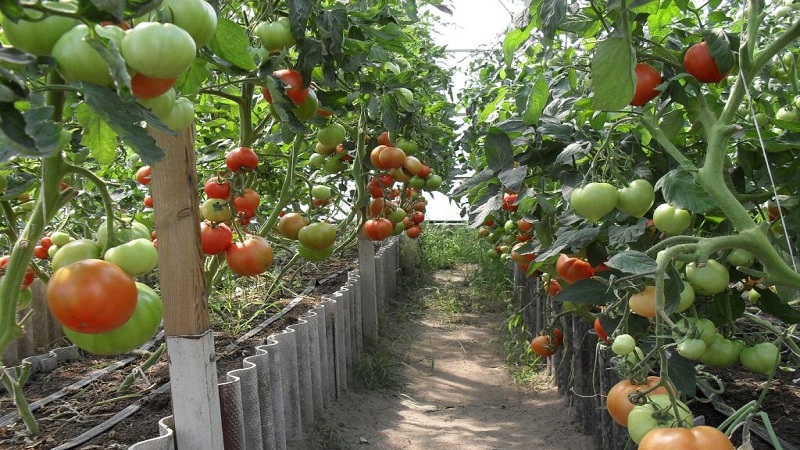
Prevention of diseases and pests
The Dutch hybrid is immune to Fusaoriasis, Verticilliasis, Cladosporium and Tobacco Mosaic Virus (TMV)... But it is not always possible to save tomatoes from late blight. It's all to blame for non-compliance with the rules of agricultural technology: excessive watering, high humidity in the greenhouse, an excess of nitrogen in the soil.
The disease can be recognized by such signs:
- brown spots on leaves, fruits and stems;
- whitish edge on the reverse side of the leaf;
- deformation of tomatoes.
Proper care and preventive measures prevent infection... To do this, in the fall, greenhouses are disinfected with sulfur checkers, and after planting the seedlings, the soil is mulched with sawdust, the soil is disinfected with copper sulfate.
Fight with late blight help:
- microbiological preparations "Fitosporin", "Trichodermin";
- chemical products "Bravo", "Ditan", "Ridomil Gold".
Folk remedies work no less effectively:
- ash (pour 300 g into 1.5 liters, bring to a boil, strain through cheesecloth, bring the volume to 10 liters and add 20 g of soap shavings);
- hay (1 kg of rotten raw materials and a handful of urea are soaked in 10 liters of water for 3 days);
- copper sulfate (2 g of substance, 200 g of soap shavings are added to 10 liters of water).
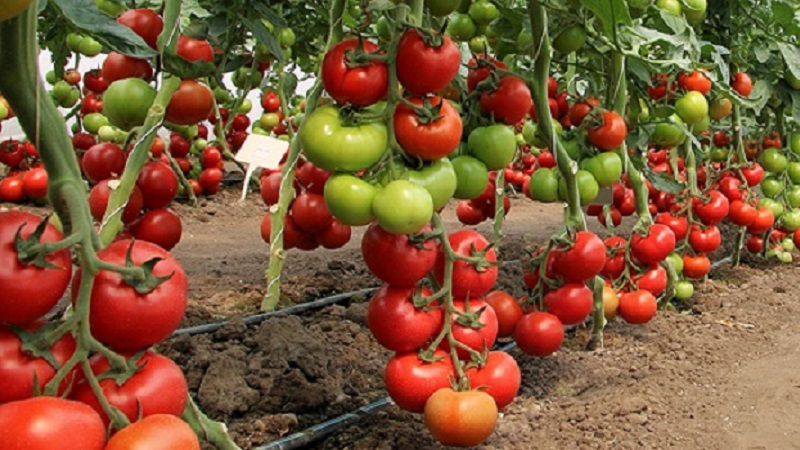
Tomatoes attract pests: aphids, bear, whitefly, spider mites, slugs.
Get rid of from aphids, tick, whitefly will help funds "Flumite", "Borneo", "Fitoverm". Products based on onion husks, garlic, ash, tobacco are highly effective.
Folk remedies recipes:
- 400 g of chopped garlic pour 1 liter of water, leave for 5 days;
- 300-400 g of tobacco shag pour 10 liters of boiling water, leave for two days;
- Grate 100 g of tar soap and dissolve in 10 liters of water;
- chop a bunch of celandine, pour 5 liters of warm water, strain after 24 hours and bring the volume to 10 liters;
- 50 g of ash, 25 ml of liquid soap, pour 10 liters of water and stir.
Slugs are collected by hand or treated with a solution of ammonia (2 tbsp., L., Ammonia per 5 liters of settled water).
Reviews of gardeners
Beef tomatoes require constant care, therefore not all gardeners, especially beginners, dare to grow them... But those who have already tried are satisfied with the result.
Anna, item Davydovka, Voronezh region: “I have been looking at this Dutch miracle for a long time and last year I decided to plant a few bushes in the greenhouse. Seed germination is excellent, sprouts hatch after 4 days. Abundant fruiting, tomatoes are large, juicy and fragrant. Once I tried to grow in the open field, unfortunately, nothing came of it. Summer turned out to be rainy and cold. The bushes were struck by late blight, I had to dig up and burn them ".
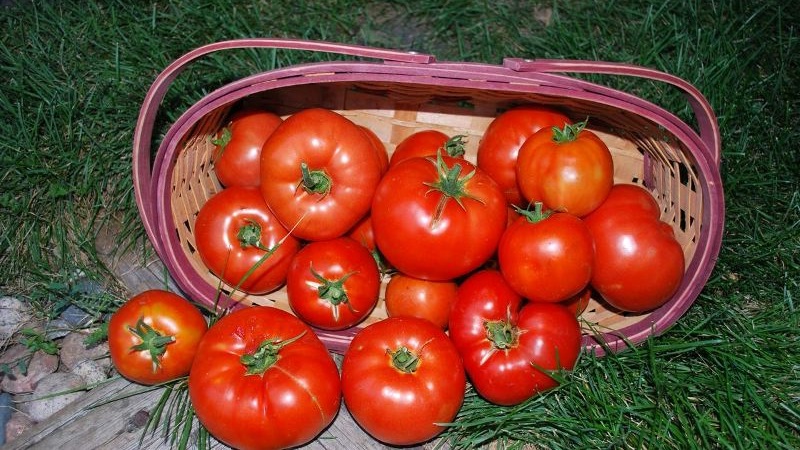
Victor, Gukovo, Rostov region: “I have been growing Big Beef for four years in a row for my own consumption. The bushes are tall, in the greenhouse they reach 2 m, they require a garter. The fruits are large, the fleshy pulp is very sweet. The maximum weight reached 700 g. Tomatoes are delicious fresh, we also prepare sauces and juice from them. ".
Natalia, settlement Bolshoye Kozino, Nizhny Novgorod region: “Big Beef is one of the favorites on my site. Fruiting with proper care continues until frost. Tomatoes can be harvested at the stage of technical ripeness, and they will ripen calmly in foam trays ".
Conclusion
The characteristics and description of the Dutch hybrid attracts many gardeners. Reviews of Big Beef tomatoes are mostly positive - summer residents are satisfied with the keeping quality, excellent taste, high seed germination, and disease resistance.
Timely moderate watering, top dressing, correct formation of the bush in one stem allow you to harvest until the onset of frost.